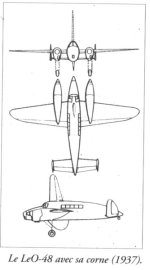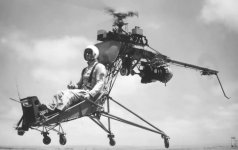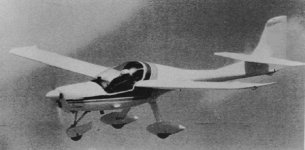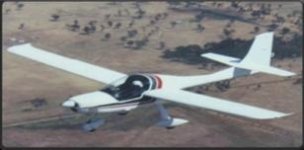-
There seems to be an uptick in Political comments in recent months. Those of us who are long time members of the site know that Political and Religious content has been banned for years. Nothing has changed. Please leave all political and religious comments out of the forums.
If you recently joined the forums you were not presented with this restriction in the terms of service. This was due to a conversion error when we went from vBulletin to Xenforo. We have updated our terms of service to reflect these corrections.
Please note any post refering to a politician will be considered political even if it is intended to be humor. Our experience is these topics have a way of dividing the forums and causing deep resentment among members. It is a poison to the community. We appreciate compliance with the rules.
The Staff of SOH
You should upgrade or use an alternative browser.
The Ongoing Mystery Aircraft Thread Part Deux.
- Thread starter Ferry_vO
- Start date
pomme homme
Members +
cthornburg
Members +
The last aircraft to carry the LeO designation was the LeO 48. This represented a considerable departure for the firm as it was an aerodynamic testbed designed by engineer Pierre Mercier and flown by company test pilot Jacques Lecarme. In early 1937 work was started on a diminutive twin engine aircraft which would become the LeO 48. It was intended to study a new two-seat fighter design (the LeO 49) which had an unusual layout. Construction was begun by the firm at Argenteuil, but final assembly was at the SNCASE palnt at Marignane.The aircraft’s first flight was from Istres on November 21, 1941. Although the test was limited by a malfunction invloving one of the Boysson pumps, the flight did confirm that the wing flaps did work successfully on takeoff and landing. The Italian authorities delayed further test flights until February 4, 1942. On this second flight the aircraft’s landing gear was retracted and Lecarme flew the aircraft to the airfield at Marignane. The next day the aircraft was flown again, but suffered an accident on landing. There were were plans to repair the aircraft and these repairs were 80% complete when the Germans occupied Vichy France thus brining an end to all further aircraft development in France.
lefty
SOH-CM-2023
The destruction of the prototype on its third flight ended this project...
Attachments
SPman
Charter Member
Whatever it is, it certainly looks French!Odd! It looks to have the engines and retractable undercarriage of the Hanriot 232 and the tail empennage of the Hanriot 230. Which might suggest that it was something between the two - but I can't find any evidence that there was such a 'missing link'. And to confound that theory, it seems to be carrying Dutch military roundels. Whatever it is, the designer appears to have applied the principle of wing warping to its fuselage!
cthornburg
Members +
cthornburg
Members +
Chris
Well according to your last clue it must be australian Buchanan BAC204....no merit of mine of course the solution was already within the last clue...Does (nick)name Ozzie Mozzie ring a bell?
Cheers
BG

JAR/VLA stands for Joint Aviation Requirements - Very Light Aerplanes. I am no expert on this subject, but I think this initially was a US/European agreement for certain certification standards for light aircraft and later accepted by many more countries worldwide.






